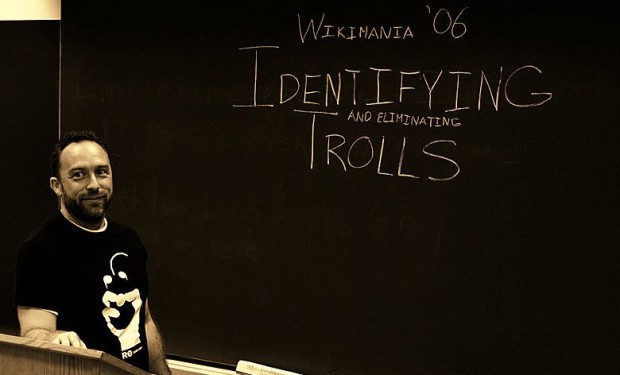Patent reform targets trolling activity
The Innovation Act introduces a number of measures that level the playing field between patent trolls and defendants.
Litigating a patent case can take years, cost millions of dollars, and can completely disrupt a company’s business. Companies that are sued for violating the rights of a patent holder are thus faced with a dilemma: litigate and incur the exorbitant costs of legal fees, or settle out of court.
Oftentimes, companies decide to settle a lawsuit out of court, even if they have a meritorious defense. In turn, licensing fees or large payouts go to the patent holder. Patent trolling entities, known as patent trolls, exploit this tendency by building businesses devoted solely to the assertion of patent rights.
To address the abuses of the system, a number of patent reform bills have circulated the halls of Congress. One of those bills, the Innovation Act, resonated with the members of Congress and passed with bipartisan support. The bill is in the Senate Judiciary Committee at the moment.
The Innovation Act aims to eliminate abuse of the patent system.
House Judiciary Committee Chairman Bob Goodlatte stated in a press release that the Act is designed to “eliminate the abuses of our patent system, discourage frivolous patent litigation, and keep U.S. patent laws up to date.” It is his hope that the bill will provide a shield from patent trolls, aiding American innovators and job creators.
“Abusive patent litigation is a drag on our economy,” Goodlatte stated. “Everyone from independent inventors, to start-ups, to mid and large sized businesses face this constant threat. The tens of billions of dollars spent on settlements and litigation expenses associated with abusive patent suits represent truly wasted capital – wasted capital that could have been used to create new jobs, fund R&D, and create new innovations and technologies.”
So, what exactly is a patent troll?
For the uninitiated, patent trolls, or non-practicing entities (NPE), are entities that monetize the enforcement of patent rights. NPEs are not concerned with technological product development or services; rather, their primary business is asserting patent rights.
NPEs consequently have the money, time, and resources to sue and litigate expensive and time consuming patent disputes. Some entities have abused the patent system and exploited the opportunity to sue smaller companies and end users of technology, which often do not have the resources to litigate an infringement claim.
Such abuse of the patent system by a NPE is exemplified by what has been reported by Ars Technica, and others, as “Scanner Trolls.” Last year, hundreds of small companies and end users received demand letters from shell companies of Project Paperless, LLC. The letters concerned the use of a patented scan-to-email process. The company sent demand letters to any scanner user that used a scanner to email PDF files. The letters demanded royalty payments that ranged between $900 and $1,200 for each user. For a company of twenty employees, for example, royalty payments would have exceeded $200,000.
Small businesses and end users were targeted in the scheme. The aim of Project Paperless was to collect royalty payments, not to litigate. By disregarding the manufacturers, which may have the resources to litigate, Project Paperless was able to focus on a large number of end users, which were more prone to settlement for a nominal amount in comparison to the expected litigation costs.
The demand letters from Project Paperless were so widespread that an online group, Stop Project Paperless, was formed to raise awareness about the companies trolling practices and equip business owners to better defend themselves if they happen to receive one of Project Paperless’s infamous demand letters.
Patent trolls take a toll on the economy.
A new study conducted by James Bessen and Michael Meuer, the authors of “Patent Failure,” revealed that patent disputes emanating from patent troll claims cost the economy nearly $29 billion every year. Those costs include legal fees for challenging the infringement claims and licensing fees demanded by trolling companies to settle disputes.
Negotiating a licensing fee and reaching a settlement is the most common manner of dealing with an infringement claim by a trolling company. Although the alleged infringer may have a legitimate defense against the claim, the benefits of avoiding litigation costs far outweigh the cost of settlement. In Bessen and Meuer’s study, the average amount spent by large companies to settle an NPE lawsuit is $230,000. Smaller companies, which have fewer resources to fight an NPE claim, pay on average $180,000 per claim. Out of eighty-two companies surveyed, the companies defended a total of 1,184 NPE lawsuits.
Companies that have the resources and gumption to litigate a NPE lawsuit incur much higher costs. Big companies spend on average $1.52 million per litigation, whereas smaller to medium size companies spend $420,000 on average. While there are a number of lawsuits that have been litigated for lesser amounts, it is not unusual for costs of litigating a patent suit through trial to exceed $2 million.
The NPE business model is not wholly evil, however. Many NPEs serve legitimate purposes, such as protecting the rights of inventors that are not able to afford the costs of enforcement on their own. Many companies, both large and small, are increasingly working with trolls to assert patent rights. In some cases, larger companies have even begun in-house trolling operations. For this reason, the Innovation Act does not single out trolling entities; rather, the bill aims to eliminate certain patent enforcement behaviors that have been abused in recent years.
The Act levels the playing field.
Key provisions of the bill seem to strike at the heart of the patent trolling business model. The Innovation Act aims to cut back on meritless lawsuits and require patent holders to be more transparent regarding who has financial ties to the patent. Another goal is to level the playing field between patent trolls and alleged infringers.
 First, the bill contains stricter requirements for pleading a claim of infringement. A patent holder previously could bring an infringement claim without alleging more than infringement and naming the infringing activity. The new pleading requirements, however, compel patent holders to identify, with precision, what has allegedly been infringed. Thus, the burden is shifted to the patent holder to identify the infringement for the alleged infringer.
First, the bill contains stricter requirements for pleading a claim of infringement. A patent holder previously could bring an infringement claim without alleging more than infringement and naming the infringing activity. The new pleading requirements, however, compel patent holders to identify, with precision, what has allegedly been infringed. Thus, the burden is shifted to the patent holder to identify the infringement for the alleged infringer.
Defendants in infringement cases are now entitled to a more descript claim and will be better prepared to make the decision to litigate or settle. Additionally, the new pleading standards will benefit potential infringers, allowing them to make decisions that could avoid infringement.
Another aspect of the bill is the shifting of liability for litigation costs. Before the bill became law, parties to a suit were each responsible for covering litigation costs. For this reason, many small and medium sized companies chose to settle infringement claims to avoid the costs of litigation, even if they had a meritorious defense.
Now, any non-prevailing party in a patent dispute will be liable for the fees and expenses incurred by the prevailing party, unless the court decides otherwise. However, the shift in fees could also burden parties on the defense, as they too will be liable if they do not prevail.
Now, all interested parties to a suit can be on the hook for legal fees and costs.
One way in which trolling companies have been able to avoid liability in the past is setting up shell corporations that hold the patent. The shell company is held out as being the patent owner, thereby relieving the parent corporation of liability. The bill attacks this practice as well. Patent holders are required to disclose any entities that have the right to enforce the patent or have a financial interest in the outcome of a lawsuit, including the ultimate parent entity. Now, all interested parties to a suit can be on the hook for legal fees and costs.
The Act further drives down the costs of patent lawsuits by limiting discovery at the outset of a case. In the case of NPE lawsuits, the burden of discovery can be disproportionate. A trolling company that does not use a patent for anything but suing for infringement, for instance, will be able to access relevant documents and emails pertaining the patent with relative ease. The burden on the defendant, however, could be overwhelming, especially if the alleged infringing activity spanned the course of years and multiple products or services. The new bill limits the initial discovery process to documents related to the infringing patent claims.
The Innovation Act is also aimed at the abusive practice of suing end users of technology rather than manufacturers of the technology. Under the Act, a lawsuit directed at an end user can be stayed, leaving it up to the patent holder and the manufacturer to duke it out. The mandatory stay is only effectuated when a manufacturer is a party in the lawsuit or in another lawsuit concerning the same patents. Furthermore, there must be an agreement between the manufacturer and end user.
A step forward, but still a ways to go.
While the Innovation Act has been applauded as a success, or at least a step in the right direction, it is not without criticism. Patent reform groups, tech companies and organizations, and pro-patent groups have voiced their concerns in the media.
According to Jon Potter, the Application Developers Alliance President, patent reform should include an easier administrative process to invalidate bad patents. Overly broad software patents, for example, are often used to sue smaller companies and obtain settlement payments. While the bill aids those smaller companies by reducing litigation costs, it does very little to address a company’s ability to challenge the validity of an overly broad software patent.
The Innovation Act’s customer-suit exception has also fallen prey to criticism. The provisions of the bill leave the door open for patent trolls to sidestep lawsuits with manufacturing companies. In turn, end users would not be able to benefit from the bill’s staying provisions.
Colleen Chien, an associate professor and patent expert at Santa Clara University Law School, wrote in Wired Magazine that patent reform should provide more protections to the manufacturers (rather than end users) of technology, allowing them to better mitigate liability. Also, the Act’s provisions may not have the intended effect of evening the playing field, she explained, when a large portfolio of patents is involved. As cases become more complex, fee shifting becomes arduous and discovery, although limited, could still be cost prohibitive for smaller companies.
The Innovation Act does not entirely eliminate the threat of patent trolling companies that abuse the system. NPEs will continue to exist and enforce patent rights regardless of procedure. But by enforcing stricter pleading requirements, requiring more transparency, and limiting discovery, the Act at least levels the playing field to give defendants in a patent lawsuit a fighting chance to litigate. It is a step in the right direction and should be commended as such.





